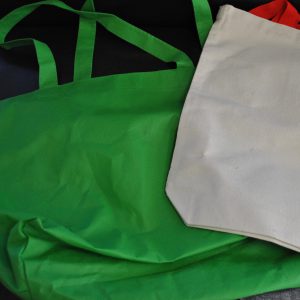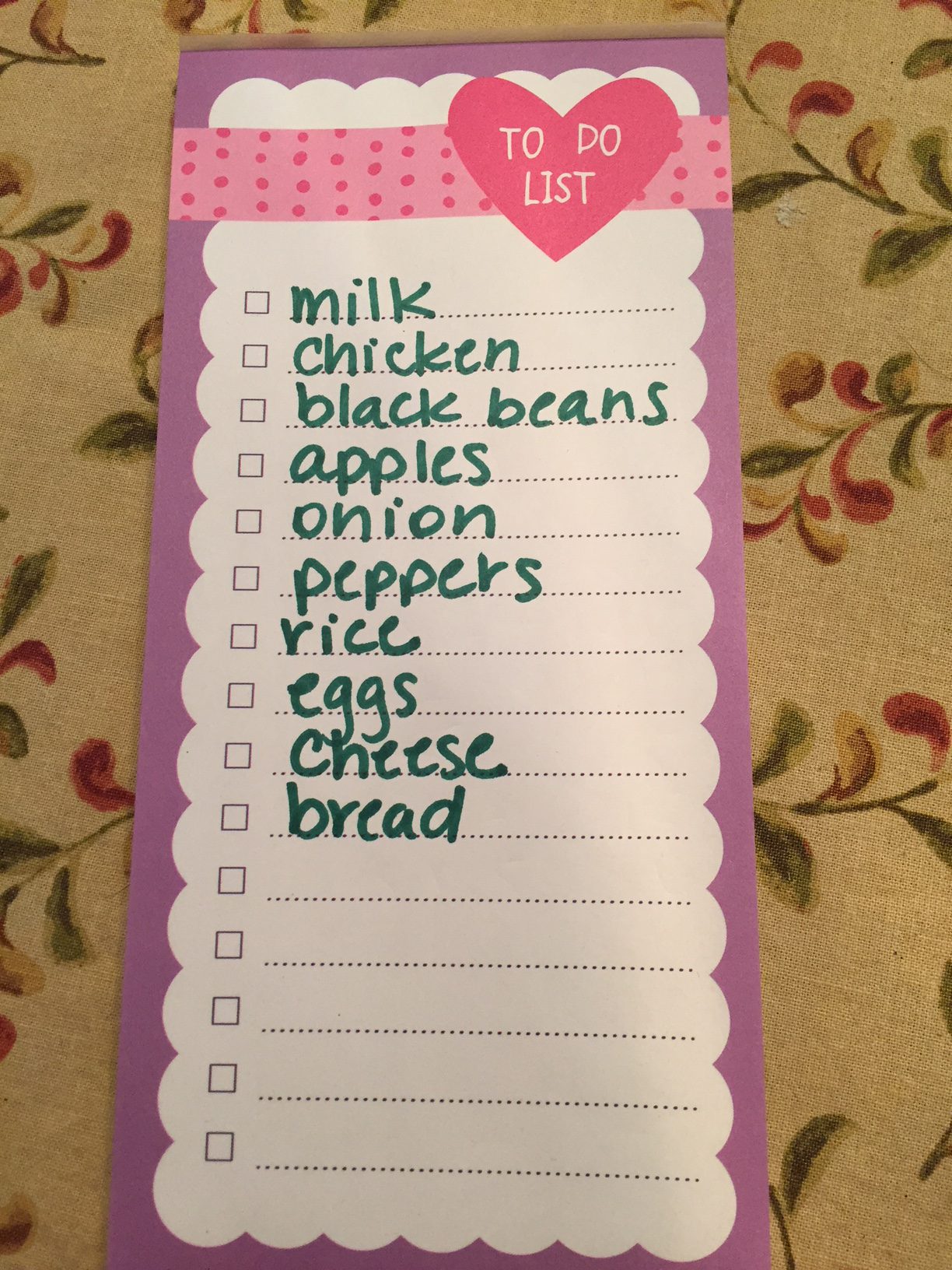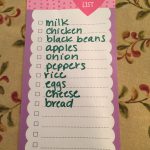
Make Grocery Shopping Sustainable

One way to be more sustainable when shopping for groceries is to use reusable shopping bags. They’re durable and sturdy and can help reduce the number of plastic bags that end up in the landfill each year. (Photo source: Samantha Kennedy)
Sustainability should not just be a buzzword during Earth Month. The fact that everybody either shops for or eats groceries means the whole grocery shopping experience is a good time to reflect and improve upon what we can personally do to embrace issues of sustainability.
This year in April, the Earth Month theme focuses on Returning to Nature. There is no better place to start a quest for personal sustainable improvement than the grocery store! Grocery shopping truly embraces the three main areas of sustainability: environmental, economic, and social. In fact, it has been well documented that the average family wastes about 25% of the food it purchases. (Much of this ends up in a landfill and creates problems of its own.)
With a bit of forethought, meal planning before grocery shopping can help individuals and families apply sustainable best practices for environmental, economic, and social well-being. In fact, many of the principles of sustainability can be effectively applied to both meal planning and grocery shopping.
RESPECT yourself. Good nutrition is one of the keys to a healthy life. Improve health by keeping a balanced diet. Vow to make healthier food choices for personal health and the environment.
REFUSE to use food products that do not fit your principles of sustainability. This may mean buying food with less packaging, eating more locally-grown fruits and vegetables, or looking for foods labeled as more responsibly sourced.
REDUCE the amount of food thrown out. Planning meals ahead of time and writing out a grocery list are excellent ways to start living sustainably. Planning not only saves money on groceries, it can save time and decrease the amount of personal food waste a family contributes. (Remember, freezing products can prolong their life, so if you find that you’ve overbought, try preserving some of your bounty for later use.) Reducing the number of trips to the grocery store also can help save on fuel and transportation costs.
REUSE /REPURPOSE food for another occasion. Careful meal planning helps ensure that leftovers from one meal can be incorporated into the next one, thereby reducing food waste.
RETHINK! Healthy, nutritious, delicious, and inexpensive grocery choices can be found in every food group. Not all food has to be prepackaged. In fact, with a bit of planning, dinner can be on the table in 15 minutes. (That’s less time than it takes to wait in line at a fast food restaurant.)
BE RESPONSIBLE! Use what you buy.
Stock up on low-cost healthy grain products like whole-wheat noodles, brown rice, and store-brand cereals and oatmeal.
Purchase fruits and vegetables that are in season and cost less. In addition, do not forget that frozen, dried, and canned fruits and vegetables can play an important part in meal planning.
Buy the largest size you can effectively use before it reaches the expiration date – and look for the items with the latest dates. Purchase store brands or generic brands whenever possible. Keep in mind smaller containers tend to cost more, no matter what the food group. Buying larger packages and dividing them into smaller portions can save money and reduce the amount of packaging that ends up in the landfill. Investing in small, reusable storage containers will save money and reduce waste in the end.
Practice Meatless Monday. The protein group provides inexpensive protein sources like beans, lentils, and eggs, which can be substituted for meat in many meals.
Protein does not have to be the most expensive item purchased. Consulting the store’s weekly sales flyer during meal planning can help you plan meals around meat and poultry items that are on sale.
Prepare food your family will actually eat. There are two schools of thought here: preparing just enough for one meal or preparing big-batch recipes that provide leftovers which can be frozen for later use. Either practice can be sustainable. Freeze leftovers only if you’re going to use them. Otherwise, cut down on the amount of food cooked to help reduce food waste.
Learn how to cook. Prepare and eat more meals at home. It is sustainable, good for you, and delicious. Meals cooked at home are more nutritious, less expensive, and result in less overall waste, such as packaging.
Two additional ways to be more sustainable when grocery shopping are to use reusable shopping bags and to stop using single-use plastic produce bags. Plastic grocery bags choke our landfills and end up in our water bodies. They are not biodegradable and can last thousands of years virtually intact. Reusable shopping bags are made from recycled materials and can drastically reduce the number of plastic bags that end up in the trash each year.
For more information on making your grocery shopping more sustainable, check out these related articles:
Freezing: Nature’s Pause Button (UF/IFAS Extension)
What’s in your FREEZER? (UF/IFAS Extension)
Best Practices for Shoppers at the Farmers’ Market (UF/IFAS Extension)
Sustainable Grocery Shopping (University of Northern Iowa)



